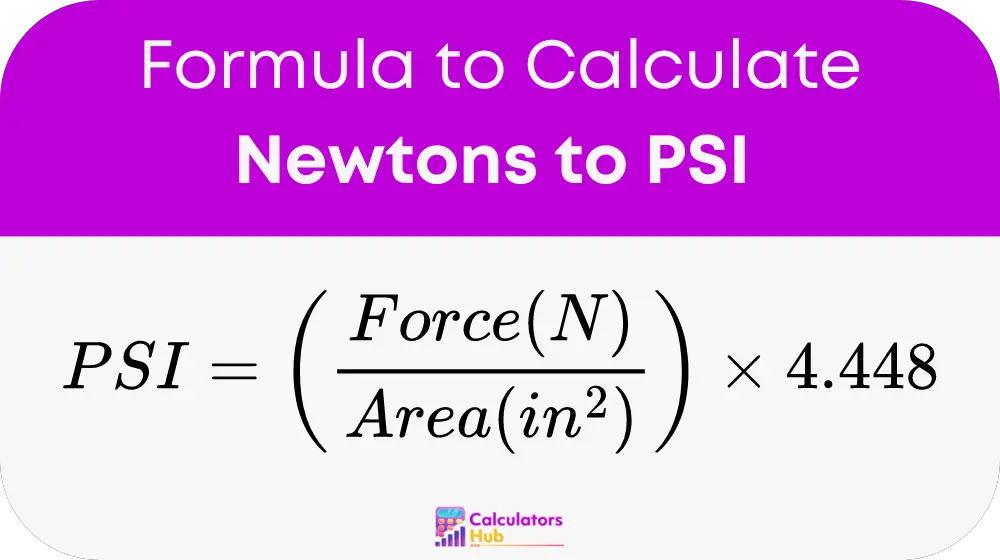The Newtons to PSI Conversion Calculator transforms the magnitude of force exerted, measured in Newtons, into pressure, measured in PSI. This calculation is crucial in a variety of technical fields including mechanical engineering, fluid dynamics, and structural analysis, where understanding the pressure exerted by a force is necessary for designing safe and functional systems and equipment.
Formula of Newtons to PSI Conversion Calculator
The key to converting Newtons to PSI is the formula:

This formula is pivotal for converting force into a pressure value by accounting for the area over which the force is applied. Here’s a breakdown of each component:
- PSI: This is the output of the calculator, representing the pressure in pounds per square inch. It is a common unit of pressure used in various engineering calculations, particularly in the United States.
- Force (N): This is the force applied, quantified in Newtons. Newton is the SI unit of force and is widely use in physics and engineering to describe the amount of effort exerted.
- Area (in²): This represents the area over which the force is distribute, measured in square inches. The use of square inches here ties the calculation closely to the customary units used in the U.S.
Comprehensive Conversion Table
To enhance utility and user-friendliness, below is an expanded table that presents a range of common conversions from Newtons to PSI, allowing for quick references and helping users avoid the need for constant recalculations:
| Force (N) | Area (in²) | PSI |
|---|---|---|
| 10 | 1 | 2.25 |
| 50 | 1 | 11.24 |
| 100 | 1 | 22.48 |
| 200 | 1 | 44.96 |
| 10 | 2 | 1.12 |
| 50 | 2 | 5.62 |
| 100 | 2 | 11.24 |
| 200 | 2 | 22.48 |
This table is an invaluable resource for quick, everyday conversions and serves as an excellent tool for educational purposes, helping students and professionals alike understand and apply the concept of pressure conversion.
Example of Newtons to PSI Conversion Calculator
Let’s consider a force of 100 Newtons applied over an area of 2 square inches. Using the formula:
PSI = 100 N / (2 in² x 4.448) ≈ 11.24 PSI
This example illustrates how to apply the formula and use the conversion table to verify the results.
Most Common FAQs
PSI (pounds per square inch) and Pascal (newton per square meter) are units of pressure. The main difference is their unit size, with Pascal being the SI unit and more commonly used globally.
The accuracy depends on the precision of the input values. It is highly reliable for educational and professional applications.
Yes, it is suitable for industrial applications where quick and accurate pressure conversions are necessary.